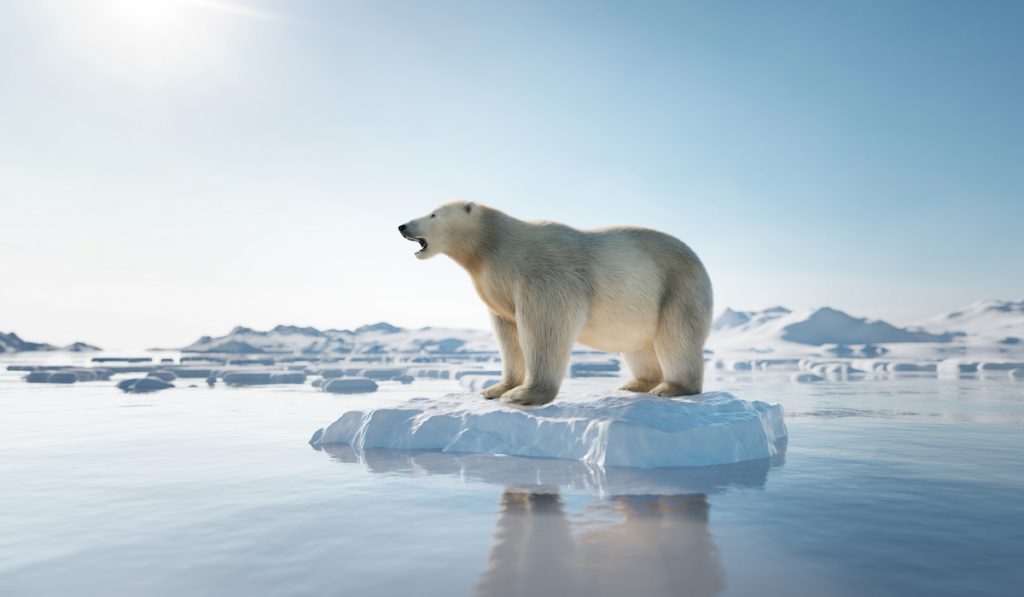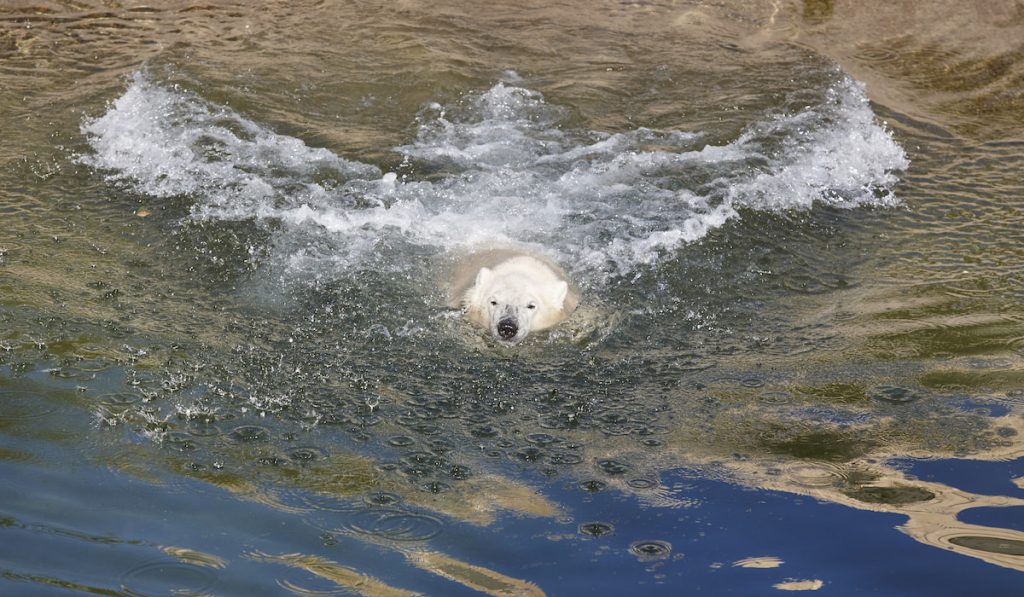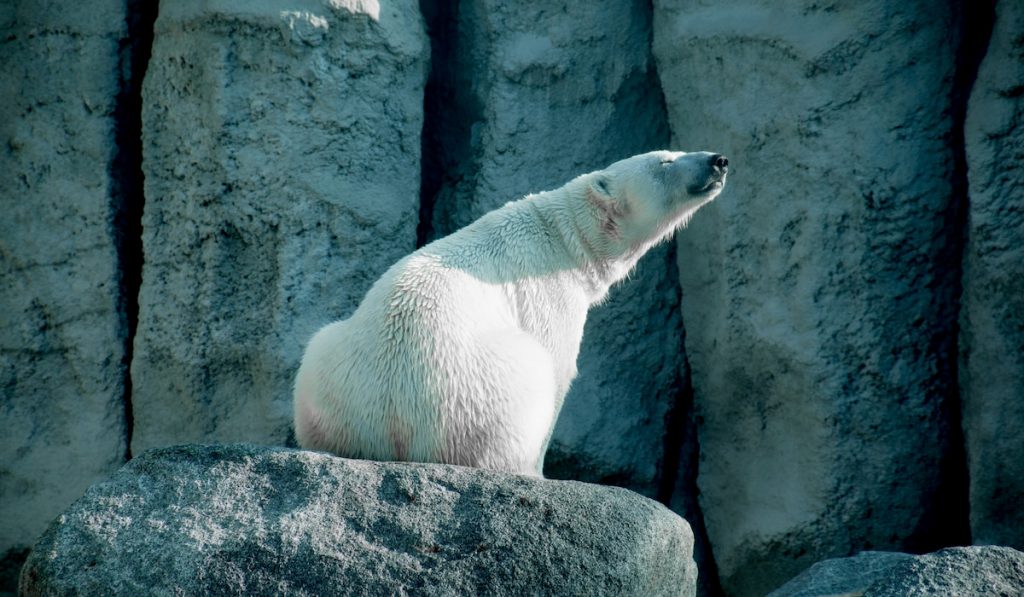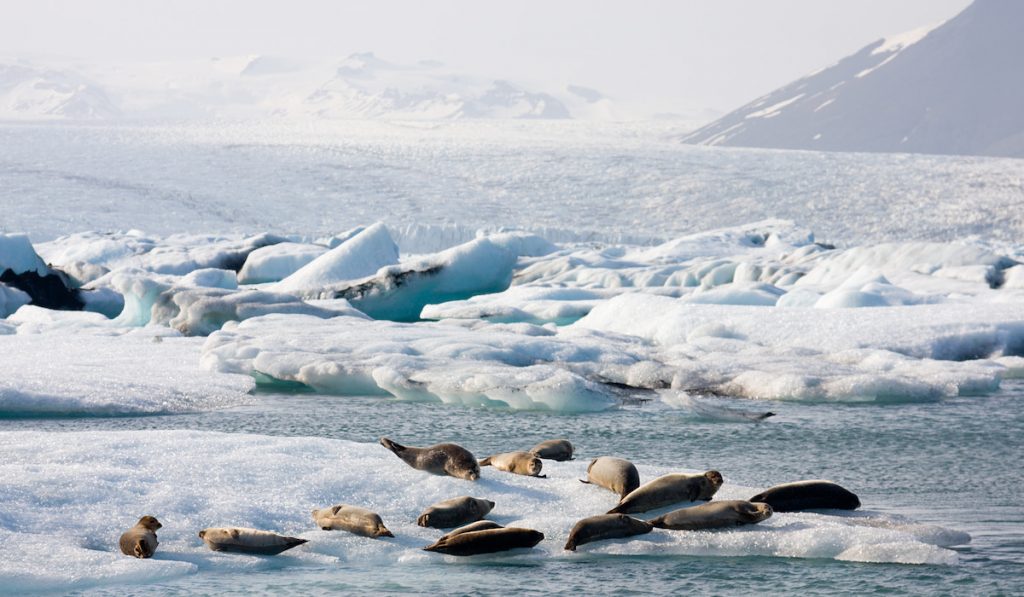11 Cool Facts About Polar Bears
Polar bears are incredible animals that most people only see on television. Their stark white coat is a lot different than the darker coats of most of their bear cousins because they live in intensely cold environments where ice and snow exist all year.
Unfortunately, climate change and shrinking habitats are impacting their global numbers. There are very few polar bears in the wild compared to decades ago.
These incredible creatures deserve all of the attention and care we can muster if they are to survive.

Polar bears are used to living in tough environments where food is scarce and the weather is harsh. They can swim for days and go without eating for just as long.
When they hunt, they can be incredibly brutal because they know that their survival is on the line.
If you’re interested in polar bears, we’ve put together a list of 11 cool facts about polar bears that you can use to impress your friends and family.
1. Polar Bears Are Actually Black
When you first look at a polar bear, their coat is often the first thing you notice. It seems like it’s almost blindingly white. So white that it seems impossible. In fact, polar bear coats are translucent.
If you look up close, you’ll see that light passes through their hairs and that their skin is a dark black color. Just look at their noses and around their mouths, and it will give you a good indication of their true color.
The reason polar bears look so white is that their coats reflect or take on the color of whatever is around them.
In polar regions, where it’s ice and snow for miles, the sun is incredibly bright and reflects the white color off of the snow onto their coats.
2. Polar Bears Can Swim for Days

Polar bears, you may be surprised to learn, are actually classified as marine mammals in the scientific community. Because they live out their entire lives on the ice and in the water of the Arctic Ocean, they’re put into the same drawer as penguins, seals, and other marine mammals.
Their ability in the water is something to behold. Polar bears can, when required, swim almost non-stop for days.
When they aren’t in the water, they climb up on a piece of ice for a short break. They have special paws that are a bit like paddles to help them move quickly through the water, and they can float for hours when necessary.
3. They Weight Up to 800kg
That’s over 1700 lbs! It’s almost impossible to fathom, but a polar bear can weigh as much as ten or more humans! These are massive animals, and their size makes their abilities in the water even more incredible.
Typically, male polar bears will be around two times as big as females. Yes, they weigh a lot, but they’re also big in size. They are the biggest carnivore on land anywhere in the world, reaching up to ten feet long.
4. They Have Very Sharp Noses

When you’re out on the ice looking for food, you can’t always count on your eyesight. The sun bounces off of the flat ice and makes a bright glare that can make it almost impossible to see. There are also a lot of snow flurries that are difficult to see through.
To be a good hunter and survive, polar bears have to rely on their noses. They can smell things over half a mile away, and are skilled trackers when it comes to hunting seals.
5. They Aren’t Territorial Animals
You might think that because polar bears are so large and ferocious, that they would be territorial animals, protecting what they consider theirs. However, the ice is always changing where they live, making defending or claiming any set piece of land quite the challenge.
Instead, polar bears have what are called home ranges. These are tracts of land that they traverse looking for food.
Different polar bears have home ranges that overlap with other bears, but usually crossing paths isn’t a massive deal. Some polar bears can traverse home ranges as large as the state of Texas.
6. They Hunt Seals Mainly

Life in the Arctic can be brutal. There isn’t much food to speak of. Polar bears spend a lot of their days hunting, most of the time without much success.
They hunt seals mainly and love it when they come across baby seals who aren’t yet confident in their swimming abilities and don’t have the speed to swim away.
However, the brutal nature of the environment they live in means polar bears will also kill their own young. They also eat birds and other small mammals that come their way.
7. They Can Run…Fast
You would think that being so big would mean these animals are slow on their feet. Yes, they can swim very quickly, but you should see what they can do on land.
When these polar bears get moving, they can run up to 25 miles per hour. Now that’s fast! Good luck to anyone or anything trying to outrun a polar bear.
8. Polar Bear Moms Usually Have Twins

One interesting fact about polar bears is that mother bears usually give birth to twins. Polar bears don’t have a lot of young, but when they do it’s typically two at a time!
Most scientists believe having twins is nature’s way of keeping polar bear populations alive.
Because their habitats are so harsh, these bears have evolved to have twins to increase the odds of at least one of the cubs surviving into adulthood. It is a harsh reality of these amazing bears.
9. Most Polar Bears Live in Canada
The majority of the global polar bear population lives in northern Canada. Other subpopulations live in other parts of the Arctic Circle, but around 60 percent of living polar bears can be found in Canada.
Most of where they live will depend on food sources, the existence of sea ice, and other factors.
10. Polar Bears Can Go Without Food for 8 Months

That’s incredible, right? We’ve already told you that polar bears can hunt for a long time without food, but you probably wouldn’t have guessed that would be months at a time. Polar bears can go without food for up to eight months.
Their large size means that their bodies carry large supplies of fat that carry them through long periods of fasting. They eat hardly anything through the cold winters up north and work hard during the spring and what constitutes a summer by eating as much seal fat as they can find.
11. Polar Bears Bathe in Snow
You might think that, with all of that water around, bears would take their baths in the sea. However, polar bears like to stay clean, and when there is blood in their coat after a kill, you’ll often see them rolling around in the snow to get the red out of their coats.
They like to stay clean, and will actively look out for loose snow where they can scrub the debris out of their coats and feel fresh again.






